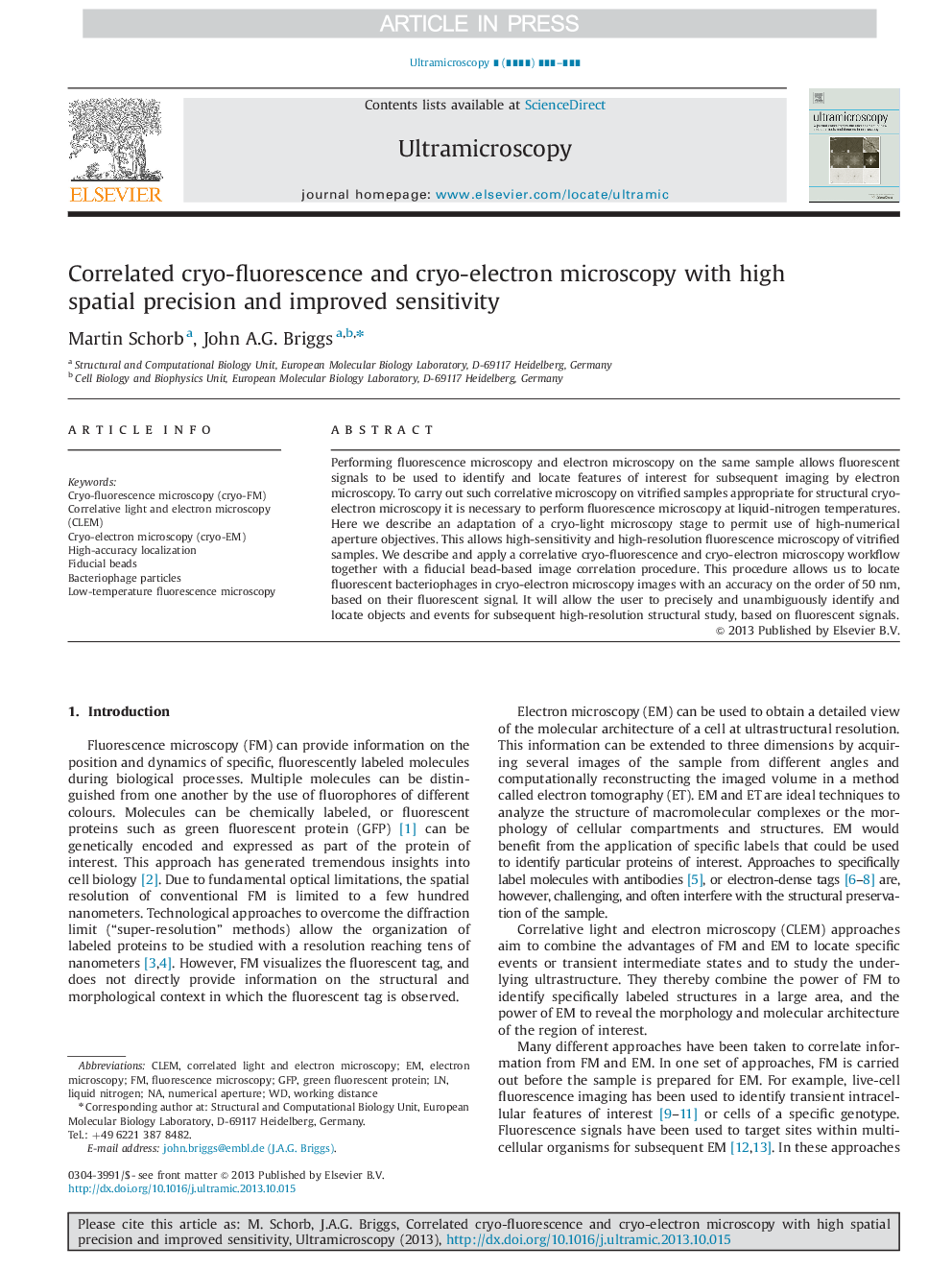| Article ID | Journal | Published Year | Pages | File Type |
|---|---|---|---|---|
| 8038329 | Ultramicroscopy | 2014 | 9 Pages |
Abstract
Performing fluorescence microscopy and electron microscopy on the same sample allows fluorescent signals to be used to identify and locate features of interest for subsequent imaging by electron microscopy. To carry out such correlative microscopy on vitrified samples appropriate for structural cryo-electron microscopy it is necessary to perform fluorescence microscopy at liquid-nitrogen temperatures. Here we describe an adaptation of a cryo-light microscopy stage to permit use of high-numerical aperture objectives. This allows high-sensitivity and high-resolution fluorescence microscopy of vitrified samples. We describe and apply a correlative cryo-fluorescence and cryo-electron microscopy workflow together with a fiducial bead-based image correlation procedure. This procedure allows us to locate fluorescent bacteriophages in cryo-electron microscopy images with an accuracy on the order of 50Â nm, based on their fluorescent signal. It will allow the user to precisely and unambiguously identify and locate objects and events for subsequent high-resolution structural study, based on fluorescent signals.
Keywords
Related Topics
Physical Sciences and Engineering
Materials Science
Nanotechnology
Authors
Martin Schorb, John A.G. Briggs,
